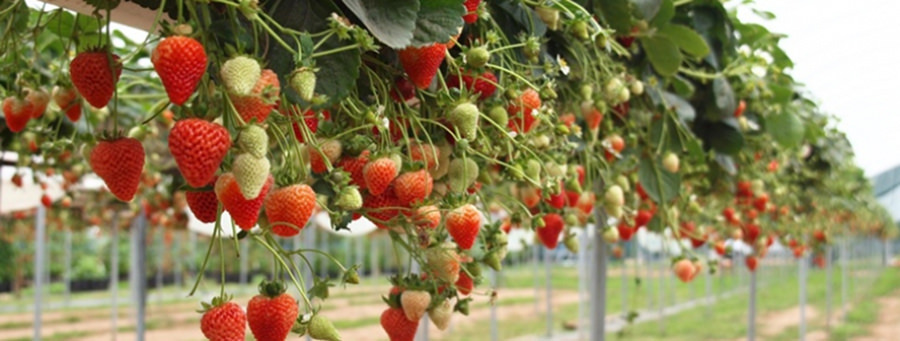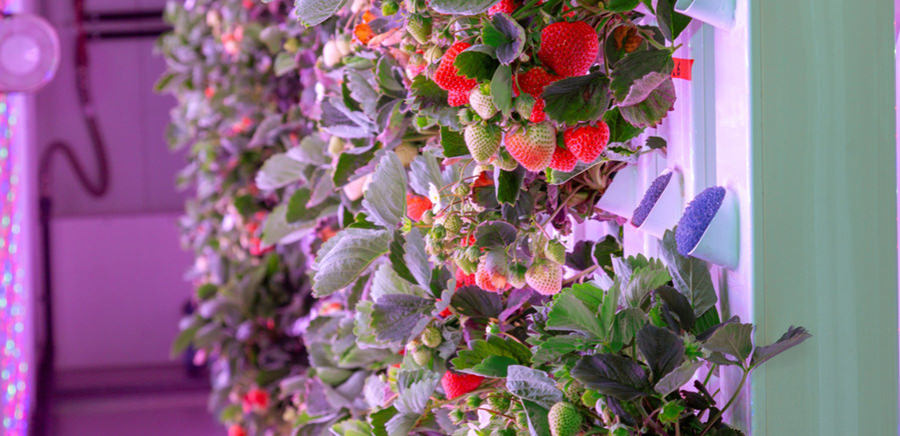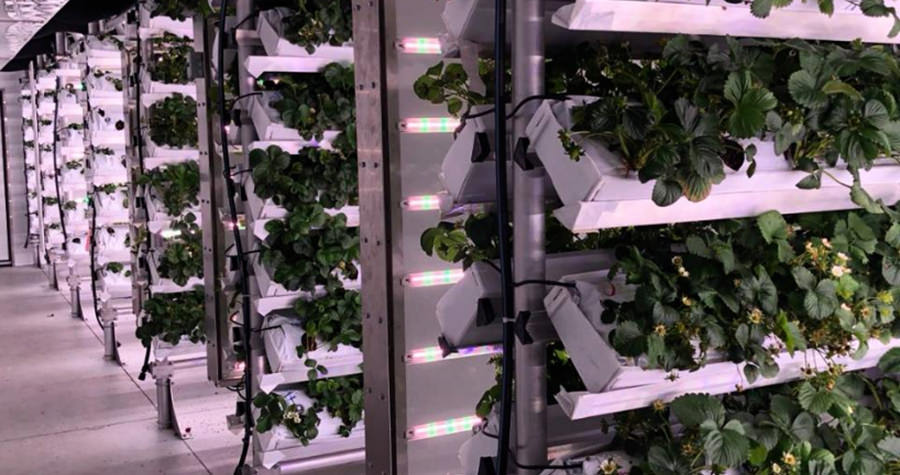Did You Know May Is National Strawberry Month?
 Author: Michelle Zheng Email: [email protected] Mobile / WhatsApp: +86-15766274516
Author: Michelle Zheng Email: [email protected] Mobile / WhatsApp: +86-15766274516
Fresh strawberries! They are one of the most popular, refreshing, healthy treats on the planet. Perfect for everything from cheesecake to mojito to jam. These sweet, slightly tart berries rank among the top 10 fruits and vegetables for antioxidant content! May is National Strawberry Month, so pull out your recipes. Strawberries and spring are a perfect match, so May is a great time to celebrate. Today we are going to share several cultivation ways of strawberry with you, greenhouses, vertical towers and vertical farm.

Greenhouse
If you already have a greenhouse system, strawberry production is a very logical way top increase your revenues and lengthen your season. Greenhouse growing strawberry has many advantages and benefits such as increased yield, relatively easier pest management, as well as better quality and quantity. The temperature of about 15℃ must be maintained until the strawberry plants start to flower. Strawberry plants love to flower in cool to warm weather or climate. The temperature must not go over 25℃ because higher temperature can negatively impair the growth of the plant and kill the pollen. Keep the greenhouse temperature around 18-25℃ until they start flowering. Once you have picked the strawberries from the plant, you need to decrease the temperature inside your greenhouse so that it stays cold throughout the winter. A cool phase is more important to stimulate them to flower the next season.
Make sure that the glazing of your greenhouse is obvious and there’s nothing within the thanks to obstructing out the sunshine. They need to receive a minimum of 8 hours of daylight a day, some varieties need up to 12 hours. As such, choose your greenhouse site appropriately and make sure the greenhouses kits you purchase allow adequate light. With lessened light and photosynthetic movement, they can’t bear many fruits.
If you would like to grow strawberries in winter, you ought to use LED grow lights to offer your plants enough daylight. Otherwise, they’re going not to develop many fruits.
Vertical Tower

Strawberries, like any other fruit producing crop requires at least 8 hours of direct sunlight. Any less and you’ll struggle to get a decent yield. If using grow lights you will usually need them to be on for quite a few extra hours. For example, it is recommended that you have your LED grow lights on for at least 14 hours. While Tower Garden do not recommend using them to grow fruiting plants inside, some Tower Gardeners have had success with this.
The advanced aeroponics technology that powers vertical tower farms yields as much as 30 percent more produce up to three times faster compared to conventional growing methods.
By growing a vertical tower method, you’ll also save about 98 percent more water. (Considering experts predict that two-thirds of the world’s population will experience water shortages by 2025, water preservation is a big deal.)
Vertical tower method also uses 90 percent less space than traditional farms, which means you can grow more crops without paying for more property. Depending on how you configure your farm, you could grow as many as 250,000 plants per acre!
Vertical Farming

Vertical farming is the process of growing crops vertically to maximize space, usually in a controlled indoor environment. This method results in high crop yields, allows for year-round food production in any climate, and enables farms to focus on goals ranging from food safety to quality. Vertical farming mainly uses vertical racking systems in a controlled environment like plant factory, containers, etc. Normally it’s easier to control the temperature down under 25℃ when growing strawberries indoors than in a greenhouse especially some areas.
The Advantages of Vertical Farming
The indoor vertical farming method involves growing strawberries in vertical layers to conserve space. Soilless growing techniques like hydroponic farming are key to the success of vertical farms.The combination of technology and a controlled indoor growing environment optimizes strawberry growth, health, flavor, and yield.
Here’s a look at the advantages of vertical farming every consumer should be aware of:
Year-Round Food Production
Indoor vertical farms can grow 365 days per year, regardless of the weather conditions. Vertical farms are not susceptible to the impacts of storms or extreme weather events in the way conventional farms are.
A climate-controlled environment allows for year-round, reliable food production. This reliability means the consumer has access to fresh, locally grown produce in every season.

